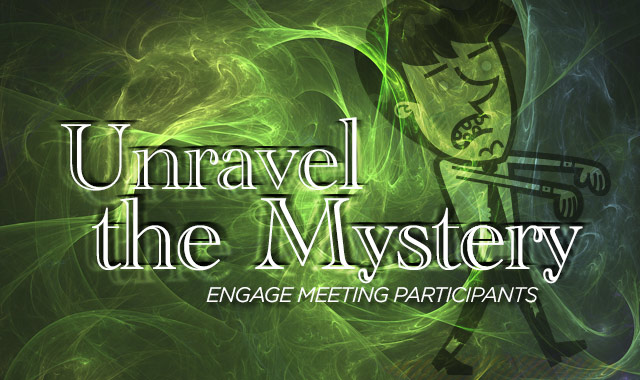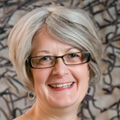Ruth Wikoff-Jones, CSEP, is a Senior Event Purchasing Manager for One10. Her responsibilities include designing meeting, event, and travel reward programs for Fortune 1000 clients, preparing budgets, researching and presenting creative program elements and enhancements, and also handling hotel and third-party vendor negotiations and procurement in support of the One10 sales organization. Ruth provides training and mentoring for new company associates. She also holds a Certified Special Event Professional (CSEP) certification, currently serves on the ILEA International Education Council, and has been a member of ILEA since 2003.
Unravel the Mystery - The Most Effective Ways to Engage Meeting Participants
As a meeting and event planner, your job lies at the intersection of the diversity of participants in the workforce and the rapid evolution of technology. With these two sometimes dissimilar factors in mind, you must somehow develop a plan that encourages your audience to go from passive attendee to active participant. But how? Ruth Wikoff-Jones, CSEP Senior Event Procurement Manager for One10, reveals strategies to engage your participants at your event — whether it’s a conference for 50,000 or a board meeting for a dozen — no matter what the audience demographics.
Q. Tell me about your organization and your responsibilities there.
A. One10 a is a loyalty company, and for more than 75 years we’ve worked with corporations on meetings, conferences, travel incentives, and reward programs. My role here is within business development, supporting the sales and client services teams. That entails writing proposals, developing budgets, delivering solutions on services, and designing events, among other things.
Q. How many meetings or events does Aimia work with each year?
A. We have between 150-180 clients for whom we plan over 2300 meetings and events each year. Those run the gamut from small meetings to large annual conferences for attendees of more than 50,000.
Q. Are there different strategies for different audience types?
A. There are now five generations in the workforce today. That’s more than there’s ever been before. That’s why, when we talk about the breadth of changes and how we communicate and how we learn, the biggest factor planners have to take into consideration is identifying their audience. Planners need to make sure they’re developing programs or events directed to their specific audience. For example, with regard to communication. There may be some who struggle with technology, while others are very comfortable with it. It’s important to look at who the audience is and be thoughtful about how you can communicate with them and develop the event. Another challenge we sometimes see is when we’re engaging with people who have seen and done everything. A different generation might be wowed, but another one might be a bit underwhelmed. Finding something that’s new and exciting is the challenge for that latter group.
Q. What strategies do you employ to engage your attendees?
A. We work with clients to develop goals specific to what they’re trying to achieve. We examine what information they want to impart in a large conference. What are they trying to get employees or partners excited about? In past conferences, we’ve used speakers and technology that allows conference attendees to track where they’re going within a conference and what they’re seeing or doing. A “social wall” is a big trend right now that lets us produce a “WOW” factor. This entails setting up a hashtag and asking attendees to post to Twitter, Instagram or text comments and images experienced during the event utilizing the hashtag. This is then driven to a video screen at the event and those comments and photos are shared in real time. It’s something that’s been very effective in getting participants engaged and excited. Or, for example, a recent trade show we coordinated in Las Vegas was a very non-traditional poolside beach party event. This allowed attendees to see some of the technology we’re using, as well as talk to vendors and other clients, all in a relaxed engaging environment. The feedback from that event was that it was phenomenal. We also find that fairly traditional engagements are still effective in building awareness and learning.
Q. Do you have examples that you’d like to share?
A. One of our clients was a large automobile corporation and we worked with them on an event surrounding a product launch. We employed mobile technology with the registration process in addition to utilizing technology to let attendees know what was happening at the event and where they needed to be for various challenges. There was a game component built into that technology that drove learning about the product itself as they completed each challenge. As a result, they were engaged and participating in a very entertaining way.
Another good example is a conference for 50,000 in which the opening session was held in a sporting arena. The client wanted to find ways to recognize separate groups within the attendees, so we used wristbands with interactive technology. Each attendee was seated within their business group, and as they were introduced their wristband would light up, each group with a different color. In this way, the individual groups felt special and recognized within the huge venue.
Ultimately, we’ve found that using technology can get people excited and engaged at the event, while continuing the conversation afterward and leading up to the next event.
Q. Any tips or best practices you’d like to add?
A. Be open to exploring options. There are lots of opportunities to discover new ideas and different ways of doing things. For example, before we moved into our new downtown office, they really rethought the office space, examining options with regard to permanent desk or flexible work space. As a result, about 70% is flexible space, with couches, arm chairs and even a porch in an atrium. The point is, to keep those kinds of thing in mind when working with clients. Alternate seating arrangements in meetings, from lounge seating to high tops to traditional conference table. In the end, you want attendees to participate in a way that feels comfortable for them.










